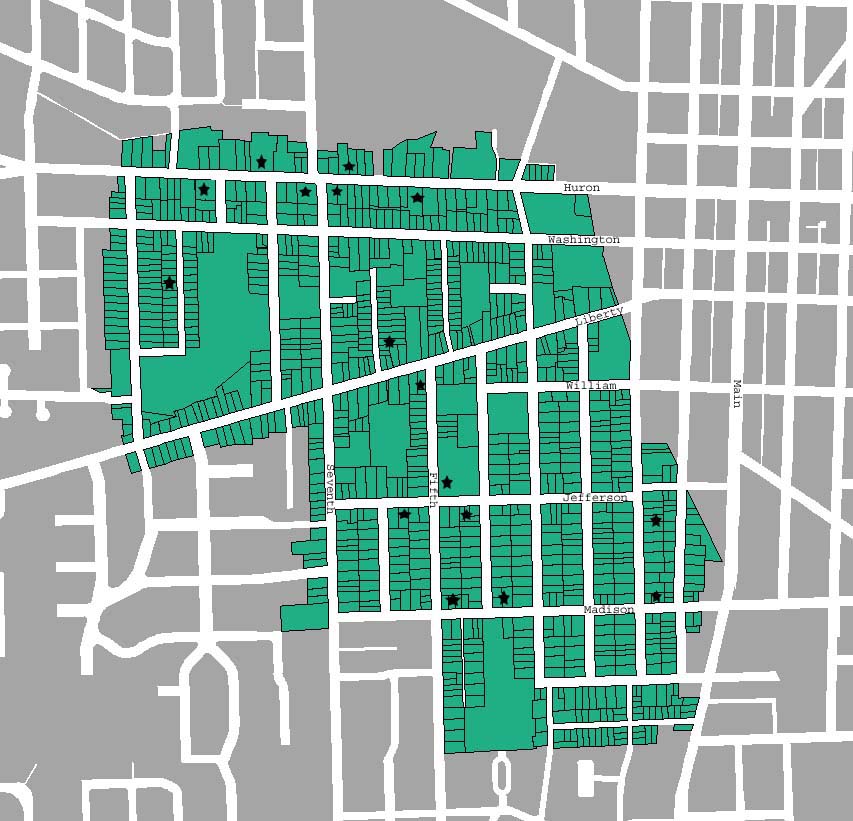|
Old West Side Historic District
Old West Side Historic District Ann Arbor's Old West Side is a compact neighborhood of primarily 19th century houses. Between 1848 and 1861, William S. Maynard, pioneer, mayor, successful merchant and real estate developer subdivided and added to the village the area bounded roughly by Liberty, Seventh, Madison and Mosley, and Ashley - what is today considered the heart of the district. The lots are fairly uniform in size (66 feet wide by 132 feet deep), and the grid pattern of the blocks forms a pleasant counterpoint to the gently rising slope of land to the southwest. While there are a few large "high style" buildings throughout the neighborhood, the majority of the buildings are modest, gable-fronted, clapboard-sided houses, one-and-a-half- to two-stories tall. Most have wide front porches and generous side yards. Nearly every 19th-century and early 20th-century architectural style can be found, from small Classical Revival houses (1830s and '40s); Italianate "cubes;" many examples of Queen Anne, from fanciful to simple; Colonial Revival; Craftsman; and Bugalow. The neighborhood has always had a strong ethnic German heritage with
German-speaking churches and schools, and German-language newspapers
for its residents. The architecture of the neighborhood reflects the
modest social aspirations of its denizens as well as their firm reliance
on quality craftsmanship. Homeowners tended to be shopkeepers or workers
in the various nearby industries such as the furniture factory, the
brewery, or the vinegar works located along the industrial belt of the
Ann Arbor Railroad. |

